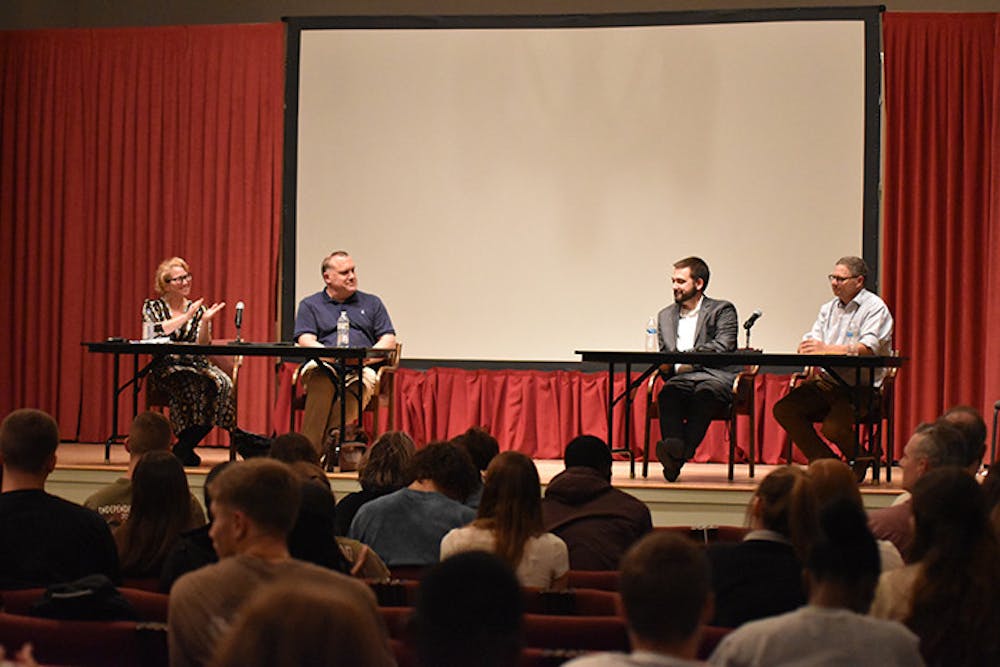The 15th Annual Criminal Justice Symposium, titled “Trump on Trial,” was held on Wednesday evening in Old Main Chapel. The symposium was a panel of four unique academic outlooks on the former president’s political and legal future.
The audience included students as well as members of the local community. President Charles Patterson and First Lady Colleen Patterson were also in attendance.
Speakers included history professor John Bloom, political science professor Allison Dagnes, psychology professor Thomas Hatvany and communications, journalism and media professor James Lohrey. The discussion was moderated by criminal justice professor Stephanie Jirard.
Each professor was given roughly 10 minutes to discuss Trump’s past and future actions regarding the legal and political battle he faces. In those 10 minutes, they explained how both former President Donald Trump and the political landscape of the United States got to this point using the perspective of their academic field of study.
The first professor to speak was John Bloom, whose focus was on President Trump’s history of stirring controversy. Bloom drew comparisons between Trump’s populist rhetoric and the stances held by former presidents Andrew Johnson and Richard Nixon and brought up Trump’s inflammatory statements toward the Central Park Five case as an example of his bigoted past.
Up next was political science Professor Allison Dagnes. According to Dagnes, extreme political polarization is the reason why Trump can use his indictment and future trial to garner support. Dagnes also brought up the concept of whataboutism, how Trump was accusing others of committing crimes — such as the controversy surrounding Hunter Biden — as a method of deflection.
Dagnes was followed by psychology professor Thomas Hatvany. Hatvany’s focus was on how Trump convinces voters. The former president is well known for his short, easily digestible sentences. According to Hatvany, Trump’s simple way of speaking is more convincing to voters.
The last to speak was professor James Lohrey. The relationship between Trump and the media is well known. Whenever the former president says something controversial, both sides of the media are quick to cover it. Lohrey spoke on how Trump helps the media create sensationalist headlines, which garners ratings and generates profit for media companies. Trump then uses the media buzz to get further ahead in the polls.
After each of the four professors was finished speaking, moderator Stephanie Jirard discussed the future legal battles President Trump is expected to face. According to Jirard, it will be Trump’s decision alone to testify, regardless of what happens.
For the remaining 15 minutes, the floor was open to ask questions if attendees needed any further clarification on the perspectives brought up by any of the four professors.
One important question asked was how politics in the United States could work toward becoming less polarized. According to Lohrey, students should listen to both sides of a political issue and get information from a variety of sources. Dagnes, who is hosting her annual Political Speed Dating Night this week, encouraged students to come to hear the perspectives of other students with opinions differing from their own.
Professor Jirard gave closing remarks by thanking each of the four professors for bringing their insight on former President Trump’s actions.



The Slate welcomes thoughtful discussion on all of our stories, but please keep comments civil and on-topic. Read our full guidelines here.